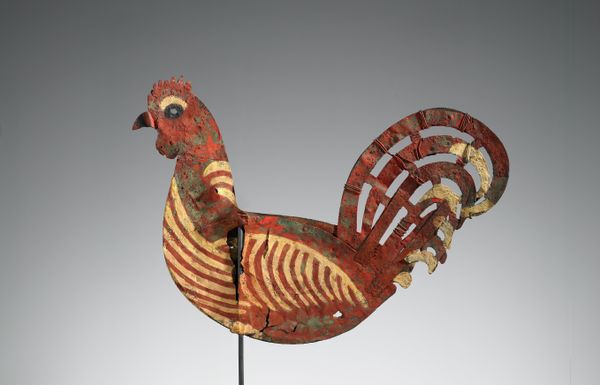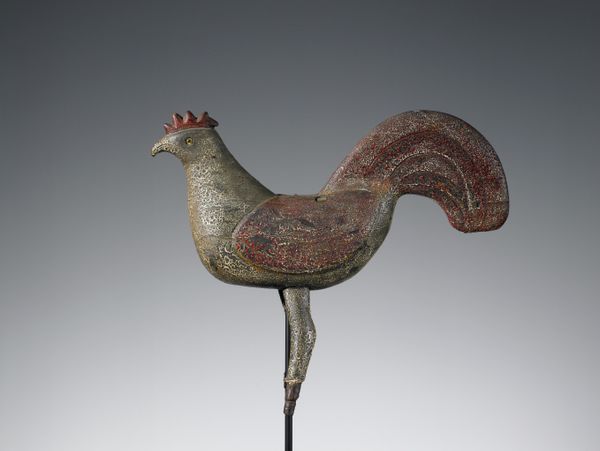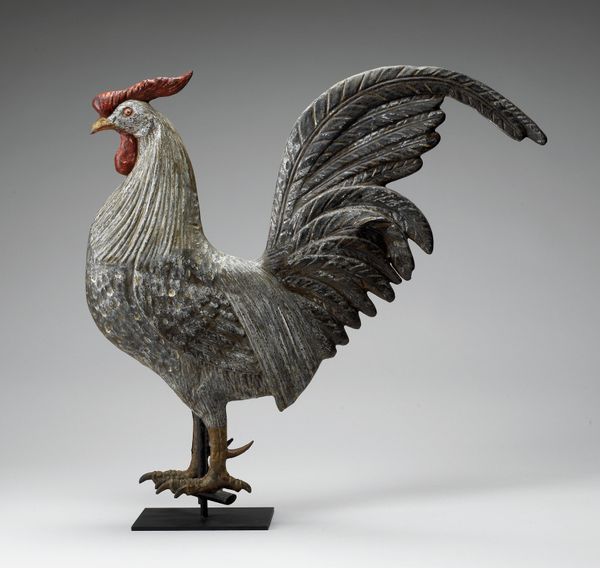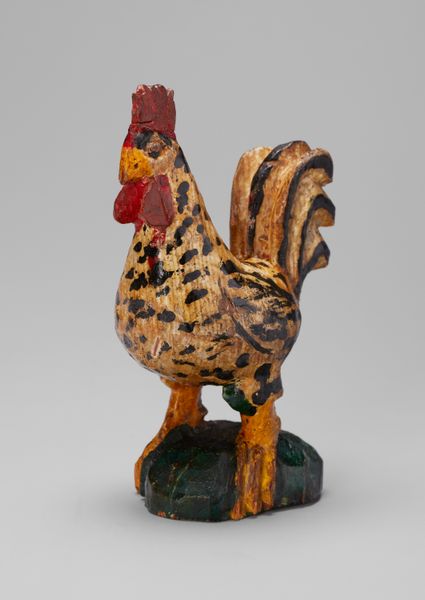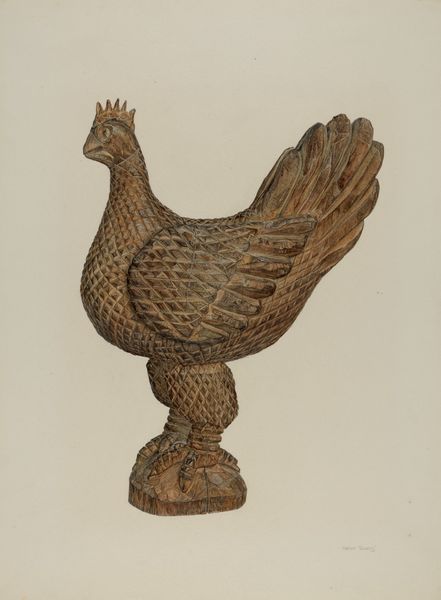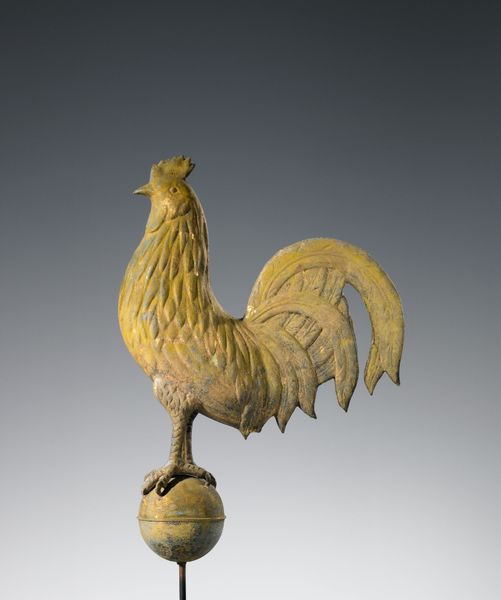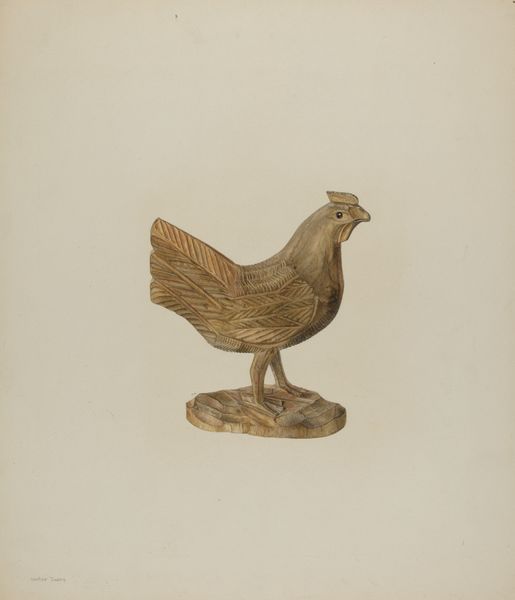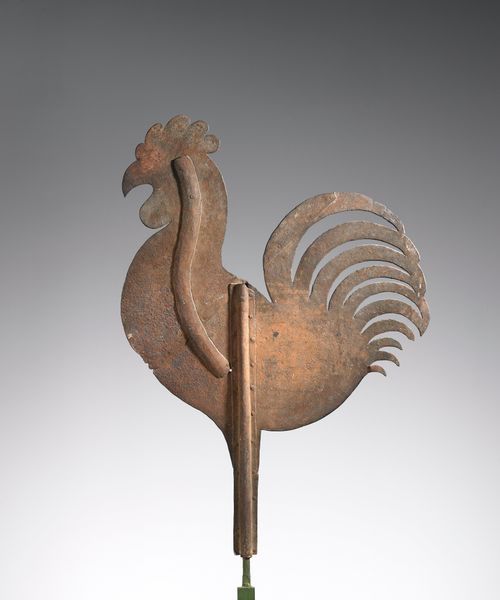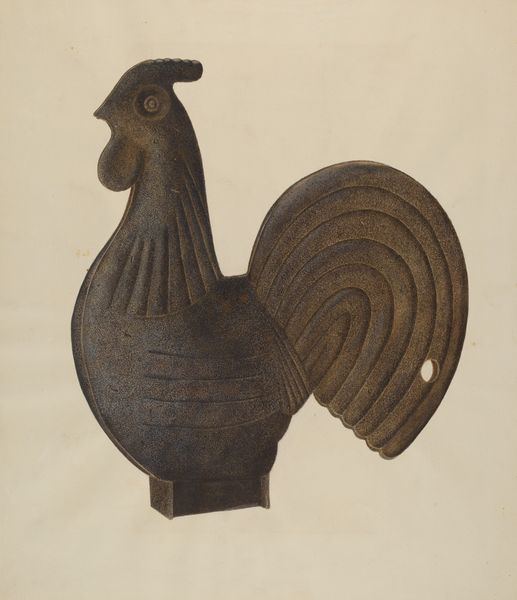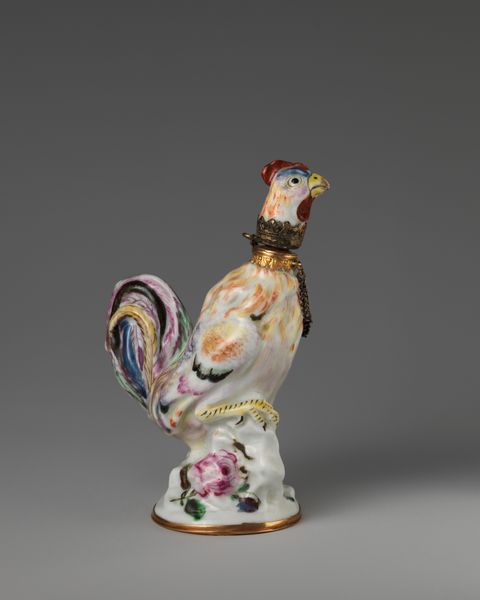
carving, sculpture, wood
#
carving
#
figuration
#
coloured pencil
#
sculpture
#
wood
#
decorative-art
Dimensions: 15.9 × 13.5 ✕ 3.2 cm (6 1/4 × 5 5/16 ✕ 1 1/4 in.)
Copyright: Public Domain
Editor: Right, next up we have "Rooster," a carved wood sculpture from somewhere between 1850 and 1900, currently residing here at the Art Institute. It's, dare I say, quirky. The coloration seems almost deliberately…rustic. What’s your initial take? Curator: Quirky's a fantastic start. It's like looking at a memory, isn’t it? This little fellow, born of wood and time, doesn’t shout; he clucks with a quiet dignity. Imagine the hands that shaped him, perhaps by a fireside, each groove and line telling a story. See the way the carver has suggested texture in the tail feathers – the economy of line. Editor: It almost feels unfinished, or maybe folk art. I'm curious about the decorative art style and why someone would spend so much time making it? Curator: Exactly. This piece straddles a few worlds. Was it intended to grace a mantelpiece or to ward off bad luck? We don’t know, and maybe that’s the beauty of it. That ambiguity allows us to project our own narratives. How does it make you *feel* when you consider those different purposes? Editor: I hadn't considered the narrative it creates! Thinking about folk art and different purposes, it changes the experience entirely. Now it feels less… accidental and more deliberate. Curator: And there it is – that's where the magic happens. We bring ourselves, our assumptions and experiences, and suddenly, the rooster crows a different tune, doesn't he? He’s reminding me to embrace the stories whispered in the ordinary. Editor: So true. Thanks, I will never look at the Rooster the same.
Comments
No comments
Be the first to comment and join the conversation on the ultimate creative platform.
